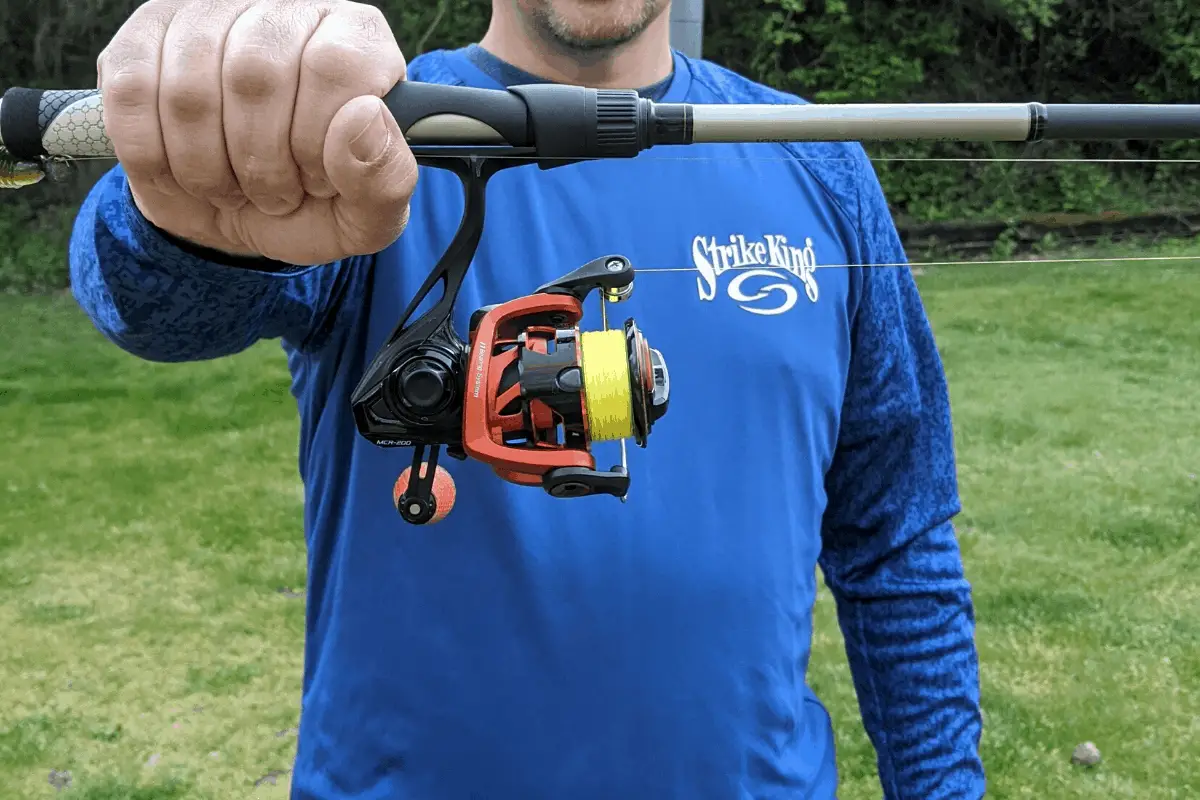It’s not often an angler can “guarantee” anything. This is different. Working on these casting techniques will definitely get more bites and bring additional fish to the boat.
If a bass angler wants to take their fishing to the next level, the following casting techniques are guaranteed to get you there: pitching, flipping, roll casting and skip pitching. These techniques put lures in tight places where the big fish live.
In this article, I will break down in detail each of these techniques and how and where they can be used to take your bass fishing to the next level.
Why it Matters
We can catch bass using the standard overhand cast. If we master the above-mentioned methods of presenting a lure in hard-to-reach places not only will we catch more fish, odds are we will catch bigger fish.
Bass love to hide in thick, nasty cover.
Presenting lures to these places can be tricky. These casting techniques are designed to get your bait into those areas. With a few days of practice, your confidence level will improve and soon you will be on your way to becoming a better angler.
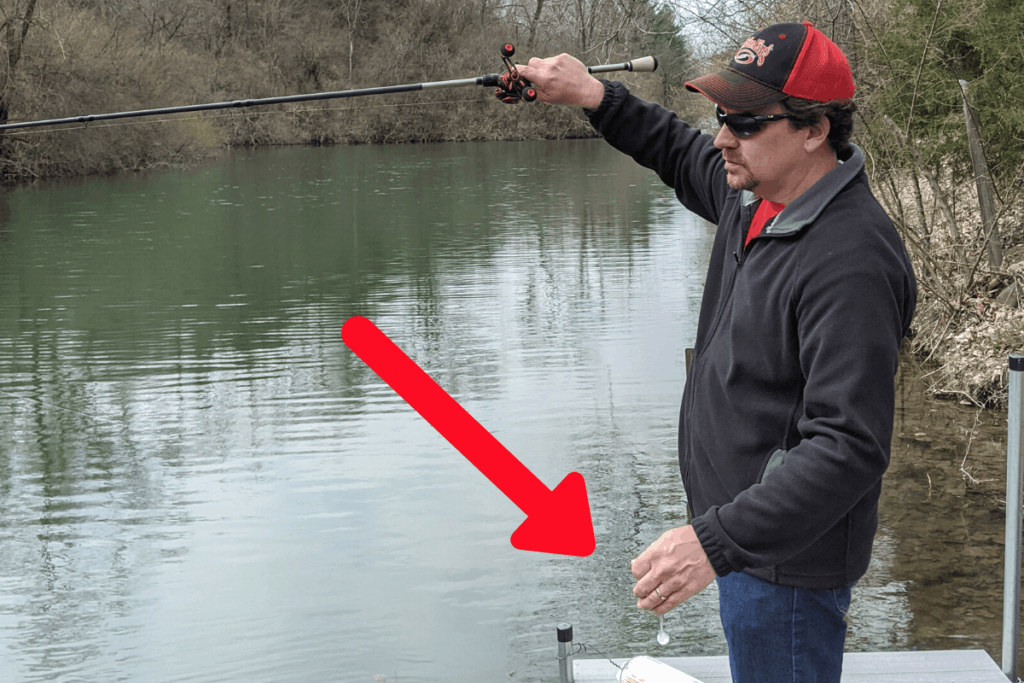
Pitching
This is by far the method that I use the most. It offers the lure of your choice to tight areas with quiet entries into the water. This single casting technique can change your entire outlook on fishing, so let’s break it down.
Pitching a lure utilizes a horizontal rod presentation that swings down like a pendulum and then reverses direction to send the lure flying towards its target just inches above the water.
It is great for reaching targets in that mid-range – let’s say twenty to thirty feet.
To start, release the spool on your baitcaster and pull the lure down to the reel. The amount of line you have out should be a little less than the length of the rod.
Next, hold the rod out horizontally and point it the direction you would like the bait to go. Use your wrist to drop the rod tip down, while holding the lure in your hand. The line should be taught. Move your lure hand back as the rod tip comes down.
The spool should be disengaged while your thumb keeps pressure on it.
Then use your wrist to swing the lure, like a pendulum, towards the target. Let go of the lure and slightly release the pressure your thumb is exerting on the spool to let the lure fly freely.
This method works best when the brake and spool tension are looser than you would have them for traditional casting.
Where to Use the Pitching Method
You can pitch any lure you want from crankbaits to jigs. (Be careful with crankbaits!)
I use this method in all water clarities from ultra-clear to muddy. It works well when trying to make subtle entries around all sorts of cover from docks to brush piles. The ability to put the lure into the water with barely a ripple allows the angler to elicit reaction strikes when the bait falls right by an unsuspecting bass.
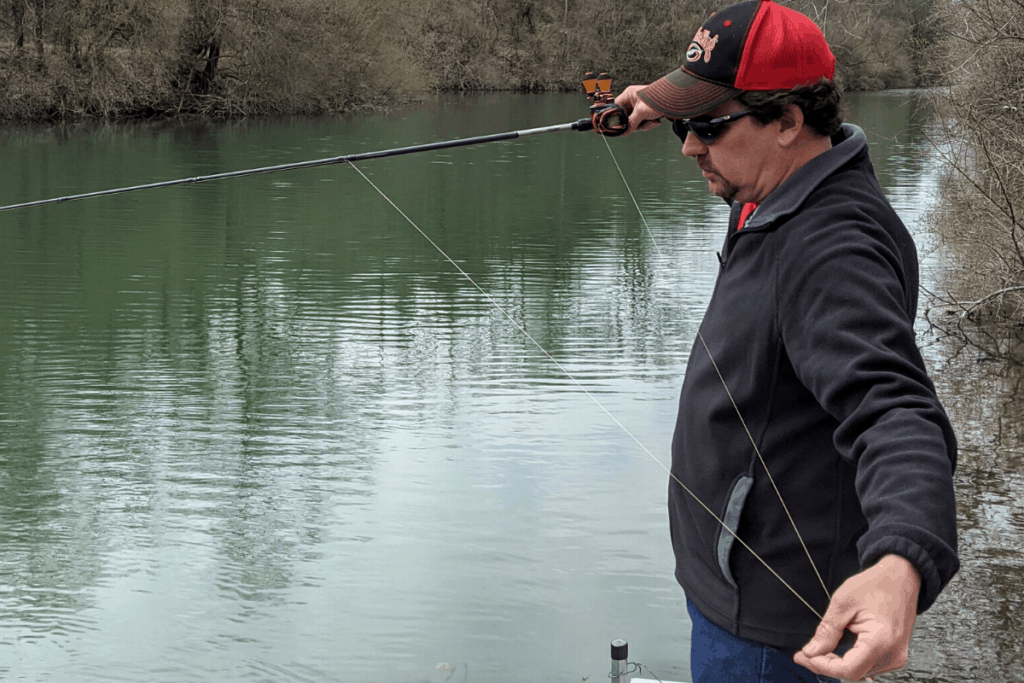
Flipping
This word is often used interchangeably with pitching, yet it is quite different.
Flipping is a technique designed for presenting to thick cover that is very close to the boat. As a result, the technique works best when the water is stained to dirty so the fish do not see you as well.
Grab your lure and pull out the same length of line as your rod. Next, grab the line right at the front of the baitcaster and pull out an arm’s length sideways from the reel. For most anglers, this will be around fifteen feet of line.
Engage the reel so the spool will not spin.
To present a lure this way, you hold the rod in a horizontal manner much like you would when pitching. With your free hand, grab the line in front of the reel and pull it out to the side.
As you dip the rod tip to swing the lure to its target, feed line with your other hand. Then pull the lure up out of the cover while pulling the line to the side again and repeat the process.
Flipping is a very short-line technique that can dip the lure into many places quickly.
Setting the hook can be tricky from this position and it will take some practice to get used to.
When to Use the Flipping Method
I favor this presentation when working extremely close to shoreline cover in dirty to muddy water.
The fish have shown me that they are shallow and focusing on visible targets is key. I do prefer a longer flipping rod, usually around 8’, when utilizing this technique so I have more reach.
The dirtier the water the more likely I am to flip shallow, shoreline cover.
Roll Casting
This technique is a staple in the arsenal of bass anglers. It allows the rod tip to stay low to the water and offers the ability to present a lure under low-hanging cover. It is also the starting position for skipping lures into cover.
A medium-heavy power rated rod with a fast action is a perfect tool for this presentation. The roll cast provides enough power to send the lure a much greater distance than pitching allows.
Use your wrist to roll the rod tip in a circular motion. I like to have about six inches of line hanging down to the lure for optimal success.
The key is to really focus on your wrist making the roll with some assistance from your forearm. Too much arm causes accuracy issues.
If you watch many videos of anglers that make a living catching bass you will see that the roll cast is a method they employ the majority of the time when fishing towards cover.
Keep your eyes on target and trust that your wrist and arm are making the correct motion. Think of a pitcher throwing a baseball – they stare at the catcher’s mitt not their arm. Focusing your eyes where you want the bait to go will improve your accuracy.
When to Use the Roll Cast Method
I use the roll cast in the same situations mentioned in the previous two techniques, but it allows for greater reach.
It works great in all water clarities, is very accurate and can be used with a variety of lures effectively.
Mastering the roll cast will immediately make you a better visible cover angler because the lure can be placed with almost zero splash. This increases the odds of reaction strikes when it drops right by that lunker largemouth.
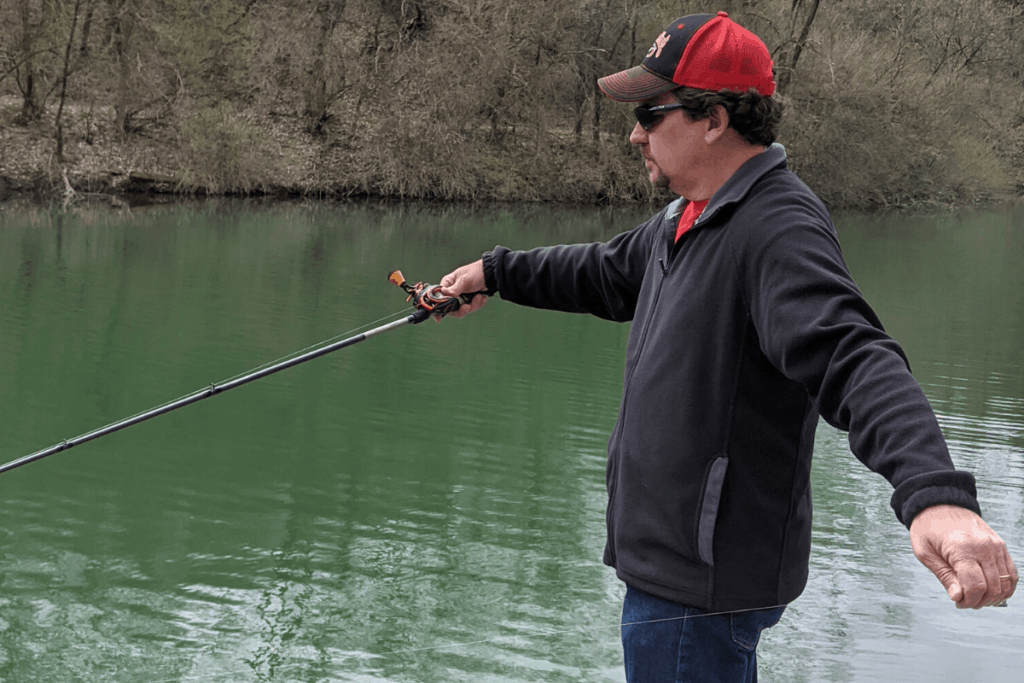
Pitch Skipping
This presentation is a favorite of mine. It is similar to traditional pitching except the rod is held off to the side and flung sideways to skip the lure into position.
The sideways presentation allows for more force to be applied to the lure giving it the needed velocity to skip under overhanging cover.
The skipping action of the bait across the surface of the water often gets bass excited and into a feeding mood. It perfectly resembles a minnow skipping to avoid a predator as it is being chased.
When to Use the Pitch Skipping Method
I utilize this technique whenever I want to get a lure deep under cover that a traditional pitch will not accomplish. It is possible with a skip pitch to shoot a jig fifteen feet under brush or a dock.
This means that you are presenting a lure to fish than many anglers are ignoring because they don’t have the tools to get the lure back there.
This method also works great in all water clarities, but the lure does make a difference. Use a bait that has some bulk to it and you will have more success with this type of method.
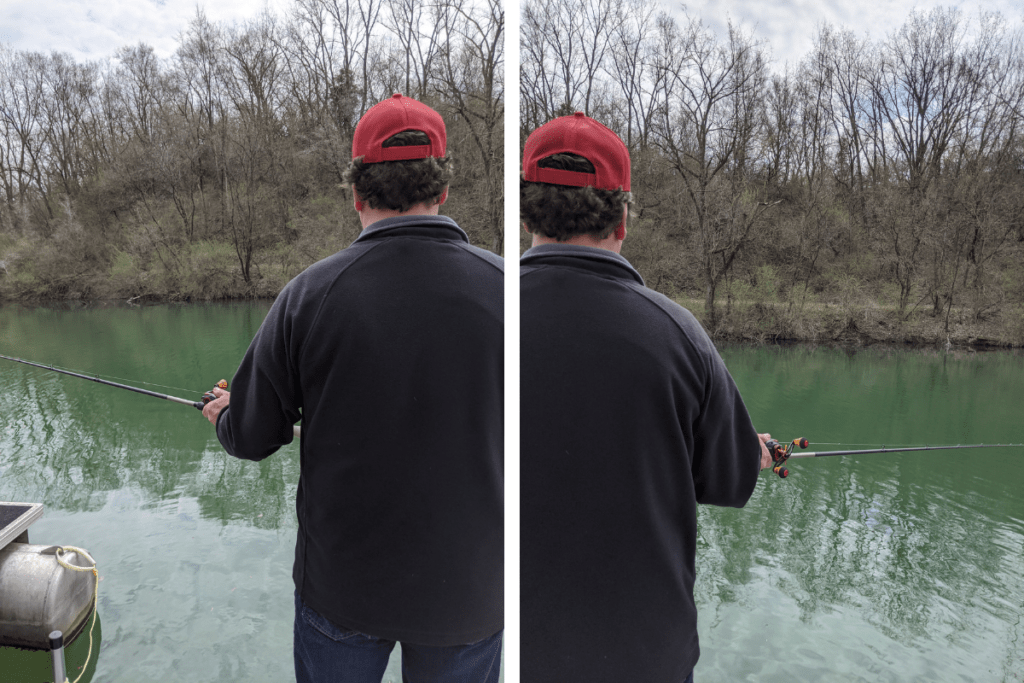
Ambidextrous Presentations
Most of us prefer to cast from one side, yet working down a shoreline offers many times when the optimum presentation would be from the other hand.
This is something that takes lots of practice, yet it is worth the effort.
Being able to present a lure with confidence with either hand will allow you to make many more casts instead of waiting for the boat to position to a better angle so you can use your dominant hand. It also helps when you have multiple anglers in the boat and you may not be able to cast with your dominant arm.
The process will be frustrating. I still toss an errant lure from time-to-time when using my subdominant hand. When I do land that perfect cast using my opposite hand it is something I am glad I worked on. Increasing the number of casts from different angles to the same target will pay off in more bites and more big bass. Guaranteed.
Final Thoughts
Each time you hit the water take a few minutes to work on one of the above-mentioned presentations and soon you will be making casts you never thought possible.
Accurately presenting a lure to targets is one of the reasons bass fishing is so much fun. When you drop the bait in the exact place you were targeting and then feel that thump – it is all worth the time and effort.
Be safe. Tight lines, and be sure to go out and encourage someone today. You never know how you may change their life forever.
Isaiah 6:8

